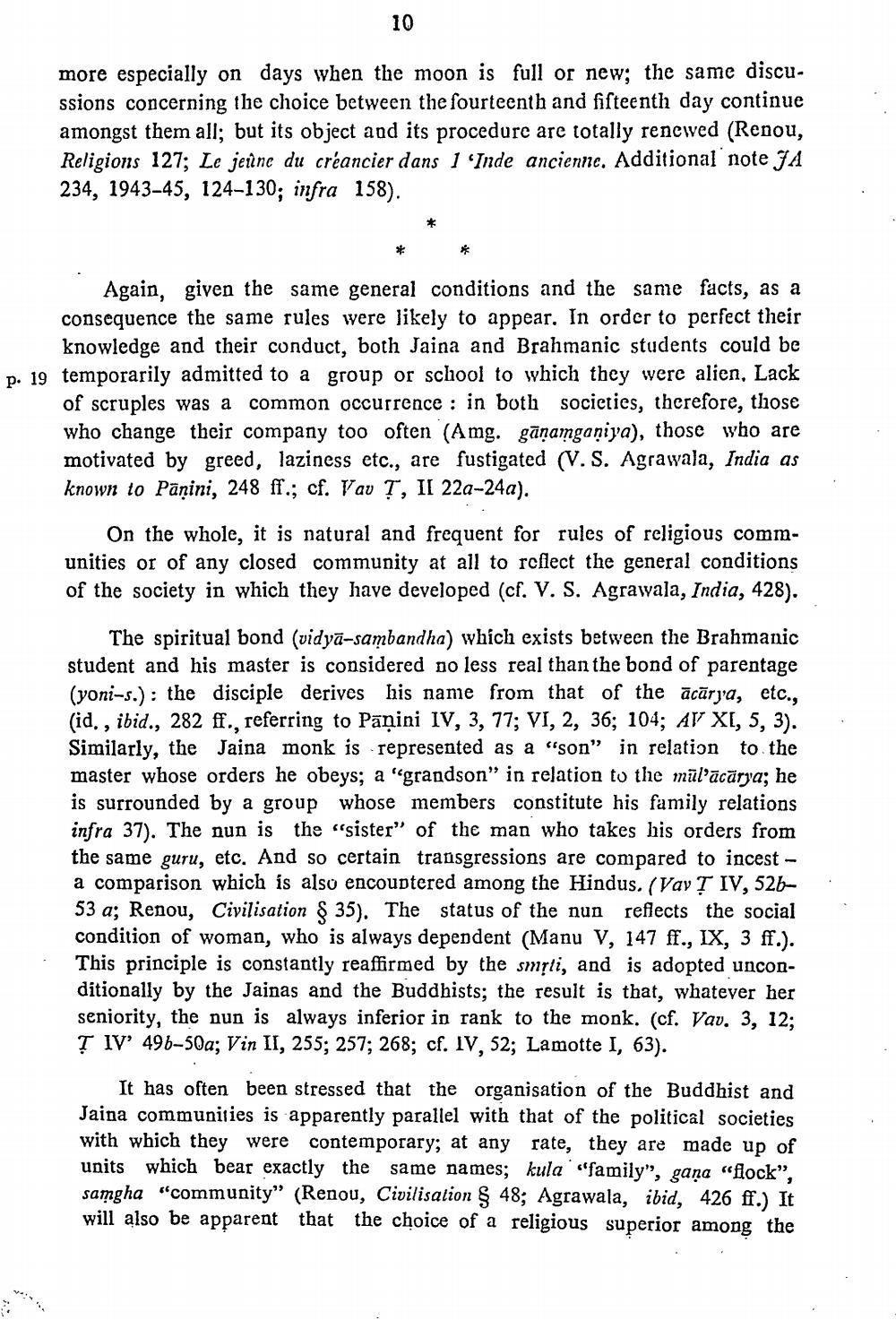________________
10
more especially on days when the moon is full or new; the same discussions concerning the choice between the fourteenth and fifteenth day continue amongst them all; but its object and its procedure are totally renewed (Renou, Religions 127; Le jeûne du créancier dans 1 'Inde ancienne. Additional note JA 234, 1943-45, 124-130; infra 158).
Again, given the same general conditions and the same facts, as a consequence the same rules were likely to appear. In order to perfect their knowledge and their conduct, both Jaina and Brahmanic students could be p. 19 temporarily admitted to a group or school to which they were alien, Lack
of scruples was a common occurrence: in both societies, therefore, those who change their company too often (Amg. gāṇamganiya), those who are motivated by greed, laziness etc., are fustigated (V. S. Agrawala, India as known to Panini, 248 ff.; cf. Vav T, II 22a-24a).
On the whole, it is natural and frequent for rules of religious communities or of any closed community at all to reflect the general conditions of the society in which they have developed (cf. V. S. Agrawala, India, 428).
The spiritual bond (vidya-sambandha) which exists between the Brahmanic student and his master is considered no less real than the bond of parentage (yoni-s.): the disciple derives his name from that of the acarya, etc., (id., ibid., 282 ff., referring to Panini IV, 3, 77; VI, 2, 36; 104; AV XI, 5, 3). Similarly, the Jaina monk is represented as a "son" in relation to the master whose orders he obeys; a "grandson" in relation to the mul'ācārya; he is surrounded by a group whose members constitute his family relations infra 37). The nun is the "sister" of the man who takes his orders from the same guru, etc. And so certain transgressions are compared to incest - a comparison which is also encountered among the Hindus. (Vav Ț IV, 52653 a; Renou, Civilisation § 35). The status of the nun reflects the social condition of woman, who is always dependent (Manu V, 147 ff., IX, 3 ff.). This principle is constantly reaffirmed by the smrti, and is adopted unconditionally by the Jainas and the Buddhists; the result is that, whatever her seniority, the nun is always inferior in rank to the monk. (cf. Vav. 3, 12; Ț IV' 49b-50a; Vin II, 255; 257; 268; cf. IV, 52; Lamotte I, 63).
It has often been stressed that the organisation of the Buddhist and Jaina communities is apparently parallel with that of the political societies with which they were contemporary; at any rate, they are made up of units which bear exactly the same names; kula "family", gana "flock", samgha "community" (Renou, Civilisation § 48; Agrawala, ibid, 426 ff.) It will also be apparent that the choice of a religious superior among the




